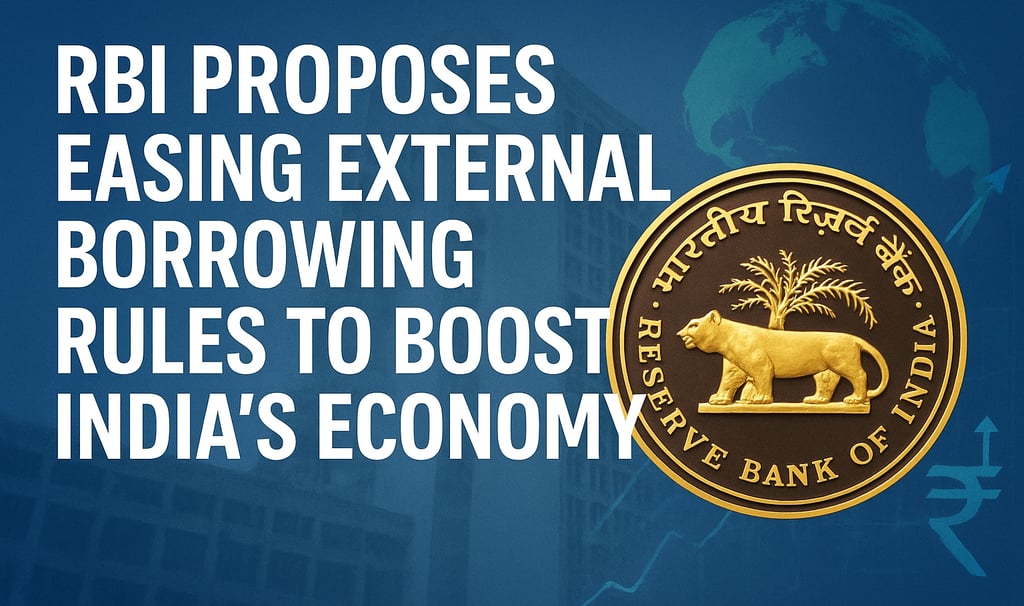RBI Proposes Easing External Borrowing Rules to Boost Indian Economy – 3 October 2025
RBI proposes easing rules for external commercial borrowings to boost India’s economy with cheaper loans, flexible limits and greater credit flow.
Raja Awais Ali
10/3/20251 min read


RBI Proposes Relaxation of External Borrowing Rules to Boost India’s Economy
The Reserve Bank of India (RBI) on 3 October 2025 released a draft proposal to ease rules for External Commercial Borrowings (ECBs). The move aims to provide Indian companies easier access to global financing, reduce borrowing costs, and inject fresh credit flow into the economy at a time when global markets remain volatile.
According to the proposal, the eligibility of both borrowers and lenders will be expanded so that more companies and institutions can participate in overseas borrowing. The borrowing limit will be linked to a company’s financial position, with firms permitted to raise up to one billion US dollars or up to 300 percent of their net worth. The RBI has also suggested easing restrictions on the end-use of funds, allowing firms greater flexibility in deploying borrowed money. Alongside this, rules on interest rates and reporting requirements will be simplified to reduce regulatory complexity and enable smoother financial operations.
The draft has been placed for public consultation until 24 October 2025, after which final guidelines will be issued.
Experts believe the proposal carries several benefits, including easier access to international capital, potentially cheaper overseas borrowing following the recent upgrade in India’s sovereign credit rating, and broader lending opportunities for banks and financial institutions — all of which could stimulate investment and growth. However, analysts also warn of possible risks such as companies overextending financially due to higher borrowing limits, deterioration in credit quality if oversight is weak, and greater vulnerability to global financial volatility, including currency fluctuations.
This reform is part of a broader set of measures recently introduced by the RBI, which include permitting banks to fund mergers and acquisitions and relaxing capital-raising limits through domestic equity markets.
At a time when India’s economy faces challenges from global trade tensions and uncertainty, the RBI’s proposal is seen as a crucial step to strengthen financial flexibility, attract foreign investment, and ensure credit expansion. Its effectiveness will ultimately depend on striking the right balance between offering companies greater freedom to borrow and maintaining strict regulatory oversight to safeguard financial stability.